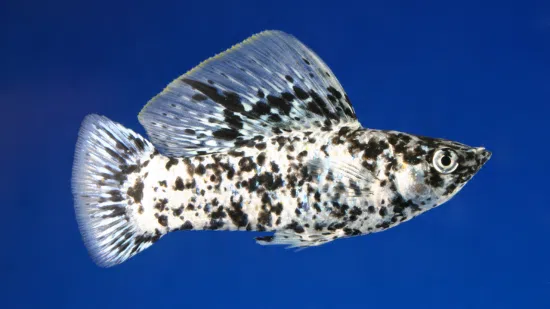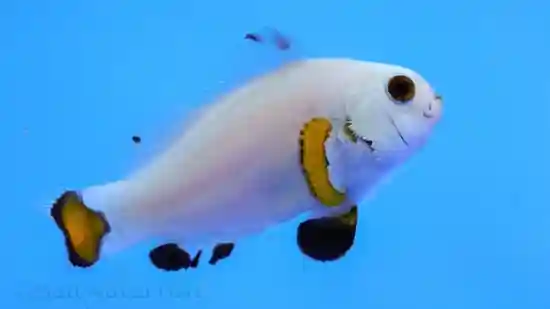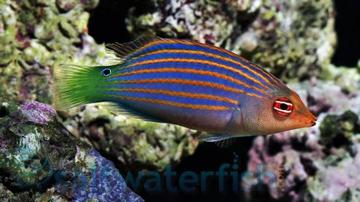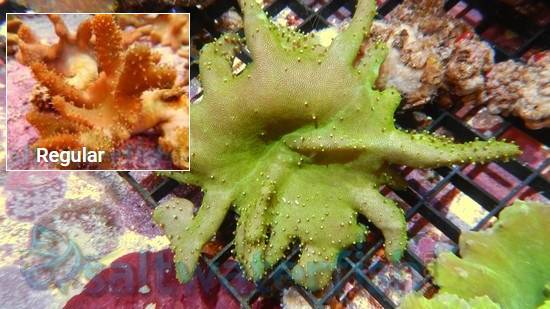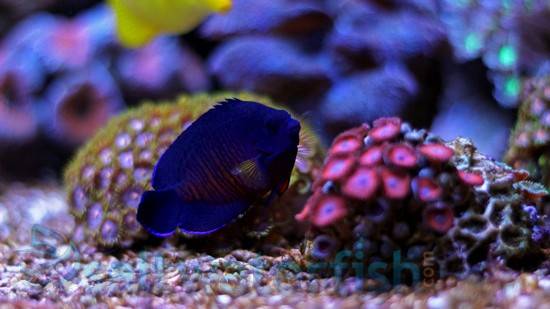Barbouri Seahorse - Captive Bred
Hippocampus barbouri
(0 Reviews)
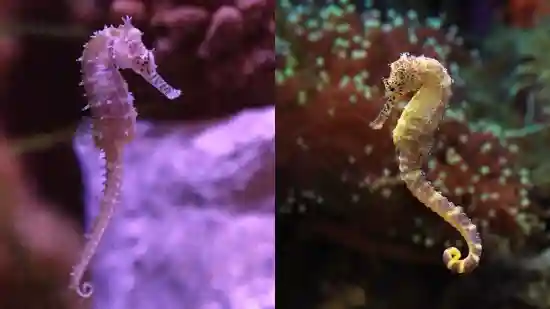
Meet the Barbouri Seahorse, a fascinating marine species recognized for its striking colors and intricate body structure. Native to shallow coastal waters, these seahorses are not only unique for their ability to change hues but also for their remarkable reproductive behavior, where males carry and nurture the young in specialized pouches.
Barbouri Seahorse - Captive Bred
Hippocampus barbouri
(0 Reviews)
{{ item.name }}
Size: {{ item.extra_field_3 }}
${{ getFormattedPrice(item.saleprice) }} ${{ getFormattedPrice(item.price) }}
To join the waiting list, click here
Free Shipping
With
$199.00
or more in Marine Life.
More details...
Barbouri Seahorse - Captive Bred Care Facts
| Size: | 4-5 Inches |
|---|---|
| Care Level: | Moderate |
| Temperament: | Peaceful |
| Reef Safe: | Yes |
| Diet: | Frozen mysis/brine shrimp |
| Origin: | Aquacultured |
| Minimum Tank Size: | 40 Gallons |
The Barbouri Seahorse (Hippocampus barbouri) gives hobbyists a hardy, peaceful seahorse with a boldly striped snout and distinctive spines, ideal for anyone wanting a species that adapts well to low-flow marine aquariums. Its natural range in Indonesia, Malaysia, and the Philippines gives it strong recognition among experienced hobbyists, helping reinforce its reputation as a reliable, aquarium-ready seahorse. Customers appreciate that Barbouri Seahorses thrive in steady conditions, show clear feeding cues, and accept enriched frozen foods once established, which supports long-term success. Limited seasonal availability encourages early purchasing when stock is listed.
These benefits build confidence for aquarists looking for a species with well-documented care, clear tank-mate rules, and predictable growth patterns, supported by conservation-focused sourcing and strong community trust.
Appearance
Barbouri Seahorses have prominent body spines, a five-pointed crown, and a sharply striped snout that sets them apart from other species. Their coloration ranges from tan to yellow, greenish hues, or light brown with fine spotting. Subtle banding develops along the tail, and the species shows clear texture changes along the trunk rings.
Care & Requirements
Barbouri Seahorses thrive in a 40-gallon low-flow system with stable temperatures between 74–78 F. This species prefers vertical hitching structures such as gorgonians or artificial posts and benefits from clean water with moderate biological filtration. Feeding is based on multiple small meals using enriched mysis shrimp, allowing for a natural feeding rhythm. Their calm nature means they do best in peaceful setups free of aggressive feeders. Consistent water changes and gentle circulation help maintain the conditions they prefer.
Is a low-flow tank required for Barbouri Seahorses?
Yes, low flow helps them feed effectively and prevents stress from strong currents.
How often should Barbouri Seahorses be fed?
They do best with multiple small feedings each day using enriched frozen foods.
Do Barbouri Seahorses need hitching posts?
Yes, they rely on stable hitching points for resting and feeding.
Tank Mates & Compatibility
Barbouri Seahorses pair best with peaceful companions that do not outcompete them for food. Suitable options include small gobies, pipefish, and other seahorses with similar care needs. Avoid fast feeders, fin-nippers, or species that thrive in strong water movement. Corals are acceptable when low-flow zones are available for perching.
What fish are safe to house with Barbouri Seahorses?
Peaceful, slow-moving species like small gobies and pipefish work well.
Can Barbouri Seahorses live with corals?
Yes, but only if low-flow resting areas are available.
Are aggressive fish suitable tank mates?
No, aggressive or fast-feeding fish create competition and stress.
Aquaculture/Availability
Currently, captive-bred specimens are not widely available; most trade relies on wild-caught sourcing. Seasonal collection patterns influence availability throughout the year, and individuals may vary slightly in color depending on habitat origin.
Are captive-bred Barbouri Seahorses common?
No, they are still uncommon, and most available specimens are wild-caught.
Does availability change by season?
Yes, supply often follows seasonal collection periods.
Do wild-caught Barbouri Seahorses adapt well to aquariums?
They adapt reliably when provided stable parameters and frequent feedings.
FAQ
How big do Barbouri Seahorses get in a home aquarium?
Most individuals reach 5–6 inches with consistent feeding and a stable low-flow environment. Their growth rate depends on nutrition and tank conditions, with steady progress over the first year.
Are Barbouri Seahorses difficult for beginners?
They are considered intermediate because they require daily feedings, stable parameters, and low-flow conditions. Beginners can succeed if they maintain predictable routines.
What do Barbouri Seahorses eat besides mysis shrimp?
They may accept copepods, enriched brine shrimp, and small crustaceans. Offering a rotation of nutrient-rich foods helps support long-term health.
Do Barbouri Seahorses change color in the aquarium?
Yes, subtle shifts occur based on lighting, diet, and available hitching surfaces. While dramatic color changes are uncommon, patterns and brightness can vary.
How long does it take for Barbouri Seahorses to settle into a new tank?
Most individuals begin feeding within hours but adapt fully over several days. Reducing stress with dimmer lighting and gentle water flow helps them adjust smoothly.
What water conditions support long-term success with Barbouri Seahorses?
Stable temperatures between 74–78 F, salinity of 1.020–1.025, and moderate biological filtration create an ideal habitat. Consistent maintenance, including regular small water changes, supports their slow metabolism.
Can Barbouri Seahorses be kept in groups?
Yes, they often do well in pairs or small groups when the tank is large enough. A 40-gallon tank comfortably supports a pair, with additional room needed for more.
What signs indicate stress in a Barbouri Seahorse?
Reduced feeding response, rapid breathing, or difficulty perching may indicate poor flow conditions or unstable water quality. Adjusting flow and testing parameters usually resolves these issues.
Currently Barbouri Seahorse - Captive Bred does not have any reviews.




